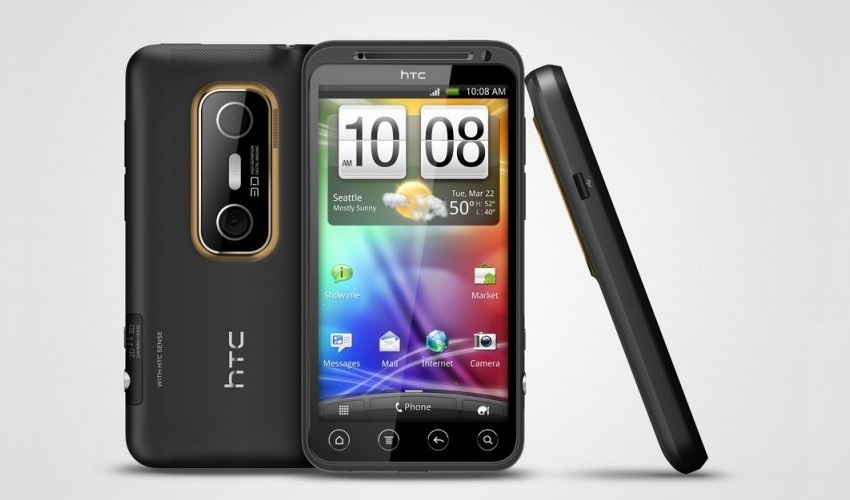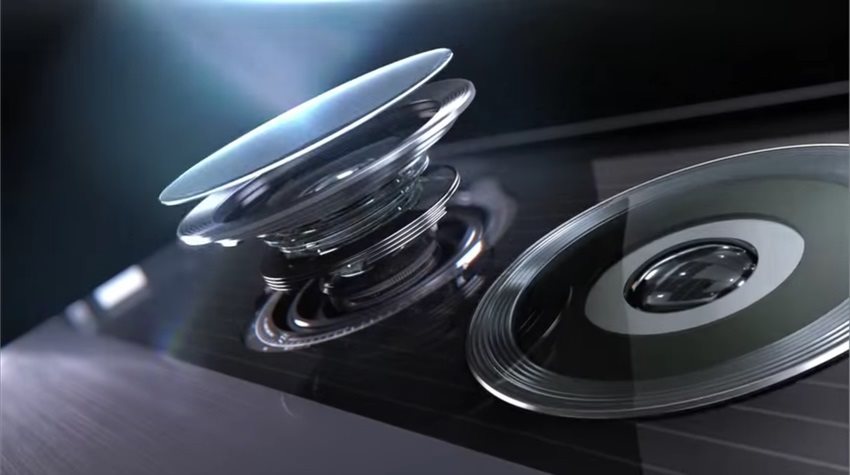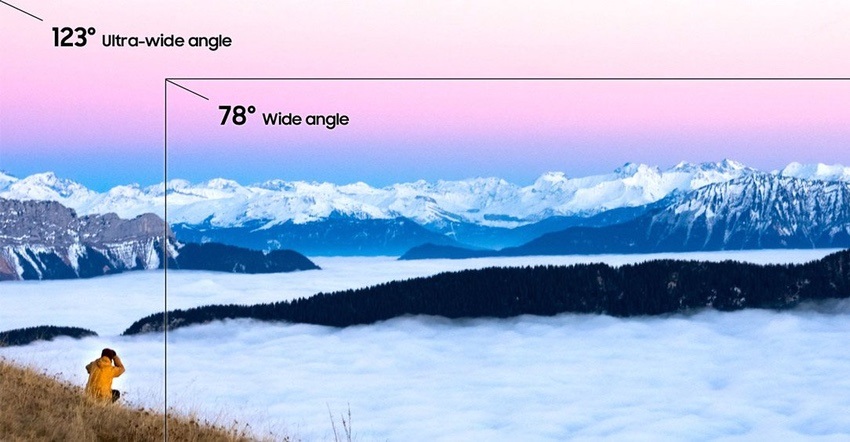Multiple Lenses in Mobile Phones: Benefits, Principle and Function
What was unimaginable just a few years ago has become a standard even for budget phones today. We are talking about dual cameras, but also about phone cameras with multiple lenses. The best camera phones offer two and more sensors. So what is having two, three, four or even more camera lenses good for?

Multiple Lenses in Mobile Phones - CONTENTS
- Where Did Dual Cameras First Come From?
- Dual and Multi-Sensor Cameras - How Do They Work?
- Telephoto Lens
- Wide-Angle Lens
- Macro Lens
- Depth Sensor
- Monochrome Sensor
- Manufacturers Tend to Refrain From Adding Even More Lenses
Where Did Dual Cameras First Come From?
Today, it may seem as if dual cameras came out of nowhere, but they didn't. Some may remember that the first smartphone with a dual camera was HTC Evo 3D, introduced in 2011. As its name suggests, it used a dual camera to capture photos with a three-dimensional effect. This feature failed to catch on, but it served as an introduction to the dual camera concept and in some ways paved the way for its successors.

In the following years, nothing much happened in the field of dual cameras, only with an occasional novelty product showing up here and there and promptly disappearing into the mists of history. It wasn't until 2014, when HTC introduced the M8, that we saw another serious attempt. It then took another two years to really get the ball rolling. In early 2016, LG came up with a model G5, which had a dual camera that finally made sense. And when Apple introduced the iPhone 7 Plus with two cameras in autumn of the same year, the trend became clear.
Dual and Multi-Sensor Cameras - How Do They Work?
Not all camera sensors have the same function, usually the second (or third, fourth, etc.) camera lens each serve to do something else. In addition, multiple camera functions do not differ by manufacturer or series, but by individual model. It always depends on what is each sensor good for.

So the functions of dual and multiple cameras often vary; sometimes the lenses work together to compose the resulting photo, sometimes they make the phone offer two angles of view and sometimes they provide special effects. The functions of each sensor can be divided into several categories.
Camera Lens Function No. 1: Telephoto Lens
The telephoto lens gives the phone an optical zoom - option of zooming in the scene being captured. There is still a digital zoom, but that is simply a type of image magnification. Photos taken with digital zoom keep the resolution of the original photo by adding missing pixels, which does not increase the observable quality of the photo.
Optical zoom, on the other hand, solves everything optically. A lens is placed in front of the sensor, which magnifies the image like a magnifying glass or binoculars. If the lens used is of good quality, there is no loss of image quality, sometimes even the opposite.
Today, the telephoto lens is offered by both flagship phones and more modest models such as the new iPhones, Samsung Galaxy S21 series, Google Pixel 6 Pro and more. The race is on to see who can offer the best zoom while maintaining the best picture quality or take nicer photos in low light. To give one example, the new Galaxy S21 Ultra 5G introduced in 2021 can do up to 10x hybrid optical zoom and up to 100x Space Zoom.
Camera Lens Function No. 2: Wide-Angle Lens
A wide-angle lens is a popular lens in multiple camera phones. Unlike the primary camera, the wide-angle one usually have shorter focal length approaching 10 mm. A shorter focal length means a wider angle of view, which means you can fit more in. This mode is great for landscape or architecture photography.

The transition between the two modes isn't seamless, so there are only two fixed focal lengths to choose from. When using this mode, it's also important to remember that in order to fit more in the photo, it needs to be smaller. Wide-angle lenses are not ideal for taking portraits as they distort the image and the face could look narrow, elongated and with a large forehead. Phones can subtly adjust the fisheye effect using software. However, if you want to fit as much of yourself into the frame as possible, this is an acceptable compromise.
The manufacturer that first came up with this use of the second camera lens is LG. It was first used in the LG G5 in 2016 and LG has kept the technology to this day, so it can be found on many phones, including the Xiaomi 11T Pro.
Camera Lens Function No. 3: Macro Lens
There are still more and more smartphones with a macro sensor on the market. We have all seen macro photography and thanks to this feature, the shots can be very interesting. It is about capturing the details of an object or nature even in more detail than we are able to see with an eye, even if we approach very close to the object. Typical examples are photos of various surfaces, small insects and flowers in detail. The macro sensor is able to focus on a very small distance, yet still takes a blur-free image.

Macro lenses are still not very common. Yet, they still can be found even on relatively budget smartphones. Two well-known examples are the Huawei nova 5T and the beautifully balanced Poco F3.
Camera Lens Function No. 4: Depth Sensor
In phone camera we often find sensors which don't directly capture the image, but rather gather information to create various effects in post-processing. The most common of these is false bokeh. Bokeh is a heavily blurred background of a photo that highlights the object in the foreground. For digital cameras and their large lenses, this effect is achieved optically. The lower the aperture of the lens and the longer its focal length, the stronger the bokeh effect is—the background is more blurry and even.

In a tiny phone camera, however, there is no physical space for some optical effects, so manufacturers had to think of something else to achieve the bokeh effect. Sometimes the second camera only serves as a proximity sensor (depth sensor) that measures how far certain parts of the photo are. The phone then processes this information and digitally blurs the background.
This doesn't always work optimally, and on cheaper phones you can often encounter an unpleasant defect, which manifests itself as a small strip of out-of-focus and sometimes jagged background along the outline of the subject, or conversely as a blurred part of the foreground. Many manufacturers call this feature "portrait mode".
Camera Lens Function No. 5: Monochrome Sensor
The last function of the multi-lens camera, which we will discuss in this article, is provided by a monochrome or "black and white" sensor. Manufacturers expect this feature will help create better black-and-white photographs, as well as higher detail and lower noise in colour ones, especially in low-light conditions. They try to achieve this by composing both photos into one, because without the ability to distinguish the colour components, the monochrome sensor becomes more sensitive to brightness. Now you're probably wondering why, but we'll get to that.
The colour sensor has scanning pixels divided into sub-pixels for sensing the intensity of red, green and blue light. By dedicating an entire pixel to brightness sensing instead, you get much better exposed photos. This has a positive effect not only on images taken in low-light conditions, but also on their overall dynamic range.

More Doesn't Always Mean Better
Manufacturers no longer stick to just two lenses and they often compete not only in the number of sensors embedded in the body of the device, but also in how the individual functions are implemented. After all, why not integrate all the above mentioned sensors into your smartphone and satisfy even the most demanding mobile photographers? Xiaomi, for example, introduced the Mi Note 10 with five different cameras. Similarly, Nokia 9 PureView impressed with its unconventionally designed photo module. But neither of them attracted many customers. Manufacturers now stick to a maximum of 4 lenses and the trend is basically to keep the number of cameras at a reasonable level.These days manufacturers are trying to impress customers with quality, which they want to achieve by, for example, increasing the resolution of the sensors. A 108 megapixel camera is no longer a rarity nowadays, as the Realme 8 Pro or Motorola G60 amply demonstrate. The use of artificial intelligence (AI) to enhance photos is also gaining ground.
- Motorola Moto G60: 120Hz display and 108Mpx camera now in the lower mid-range category
- Samsung Galaxy Z Flip3 5G (REVIEW): A modern flip phone with solid features
- Realme GT Neo 2 (PREVIEW): A gaming phone with 120Hz display and high performance
- iPhone 13 (PREVIEW): Say hello to a better display, professional camera and longer battery life
- Honor 50 comes with Google services, 120Hz display and high performance
- How to Choose a Mobile Phone (2021)
- Google Pixel 6 and 6 Pro (PREVIEW) An original design, custom chip and 5 years of support
- More articles from the Mobile Phone category
There are still single-sensor phones on the market, but multi-camera phones tend to dominate. You should choose based on the specifications of the entire photo system. You can opt for a phone with a camera that will suit your specific needs, so consider whether you like to zoom in on a scene from a long distance, want to fit into the shot as much as humanly possible, or prefer to do some macro photography.


